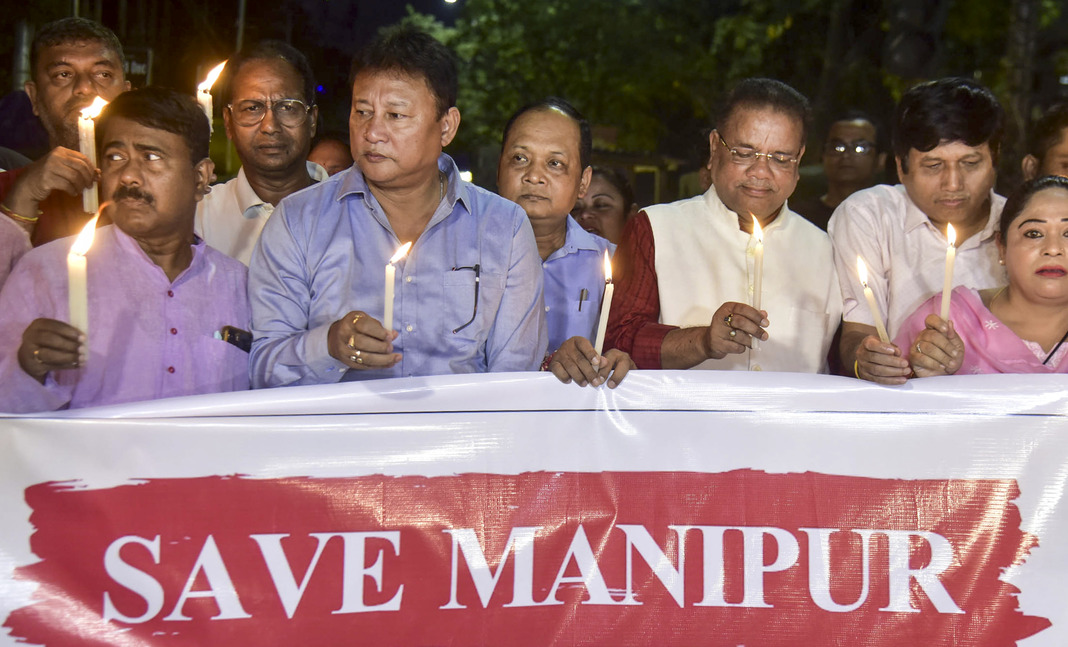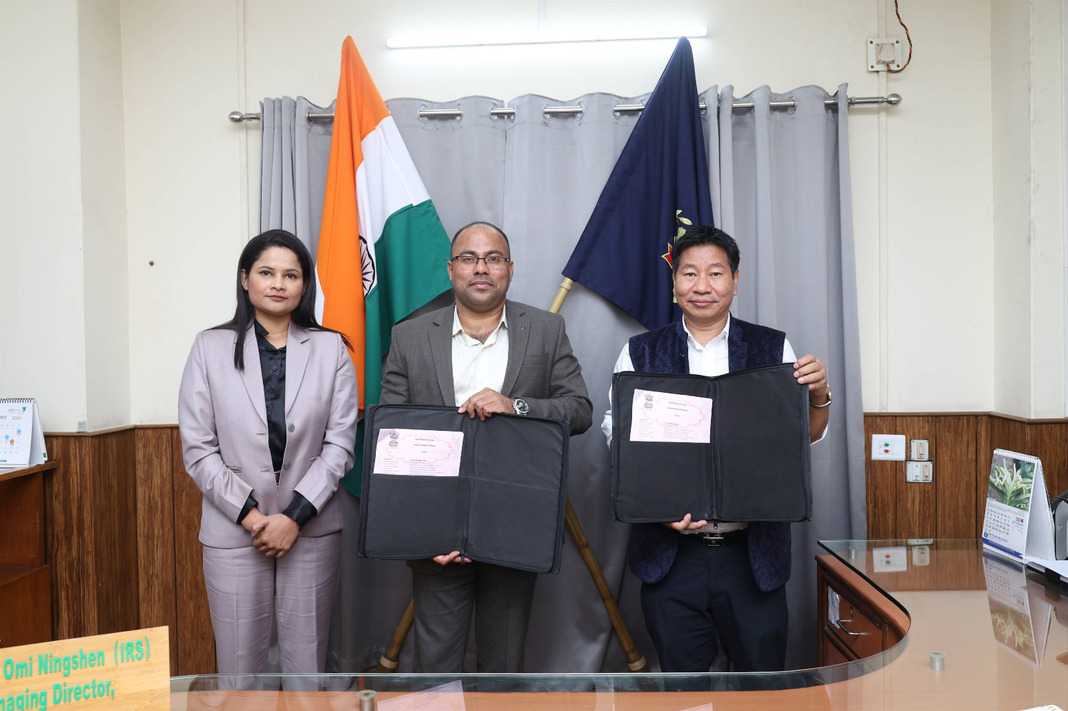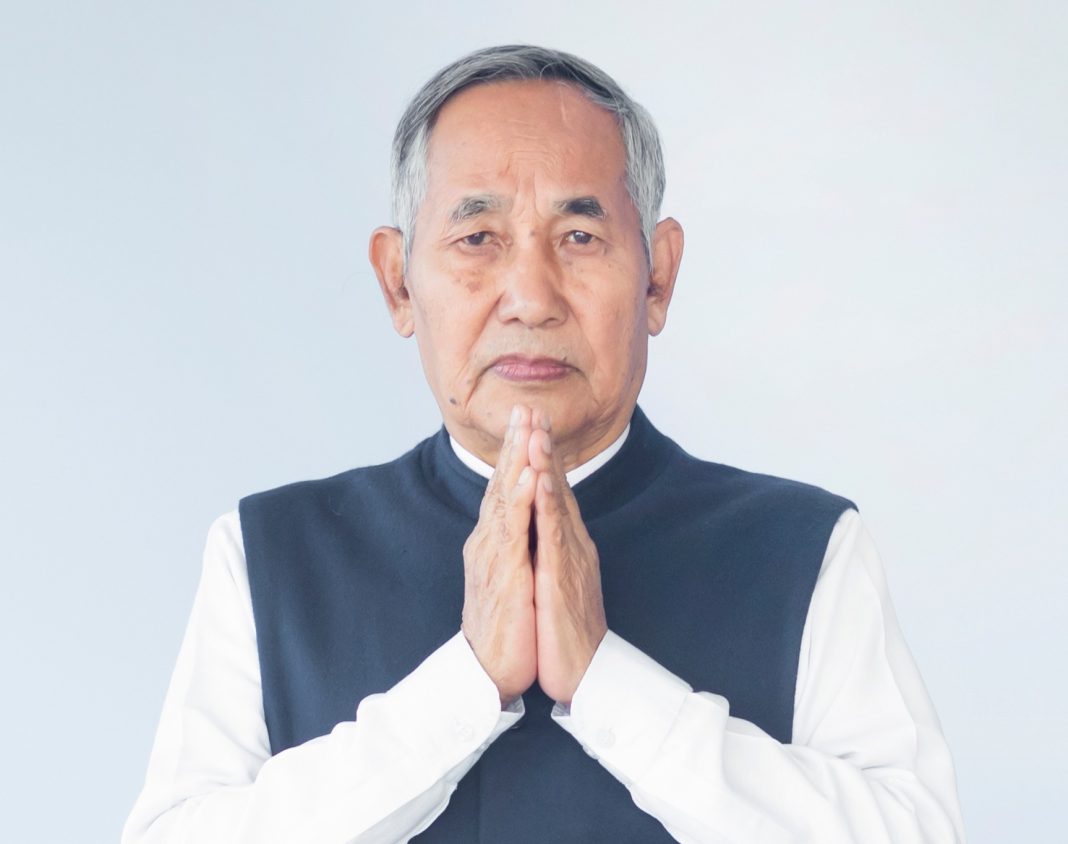By Dipak Kurmi
The history of Manipur is a tapestry woven with the rich and complex threads of various ethnicities, religions, and cultural identities. Dominated by the Meitei monarchy under the Ningthouja Dynasty, the region, once a powerful kingdom, witnessed a dramatic transformation in the 20th century. Founded by the Meitei king Nongda Lairen Pakhangba, who enthroned the dynasty at Kangla in the Imphal Valley, the kingdom’s political structure evolved over time, under the rule of successive kings, princes, and princesses. Manipur’s geopolitical history is marked by its encounters with the Burmese Konbaung Dynasty, its eventual governance by the British East India Company, and later its status as a princely state under British colonial rule.
Manipur’s autonomy was significantly affected by British imperial interests, but with the lapse of British paramountcy following India’s independence in 1947, the state regained its political freedom. However, the independence did not signal the end of conflict in Manipur. Instead, the state, which had been largely dominated by the Hindu Meitei community, witnessed the rise of Meitei Nationalism and the demands for a democratic government. These demands led to revolts against the monarchy, resulting in the first modern insurgency in the region. In 1972, Manipur became a separate state within the Indian Union, but the insurgency, spurred by a quest for greater autonomy and self-determination, continued, leaving a deep imprint on the state’s political and social landscape.
As India entered the 21st century, new dimensions were added to the region’s conflicts. Among the various indigenous groups, the Kuki tribe from the surrounding hill areas gained prominence in the socio-political struggles of Manipur. The Kuki people, collectively known as Kuki-Zo, share a long history of interaction with the Meitei population. Historical chronicles from the time of the Meitei kings refer to various Kuki tribes living in the hills of Manipur, often collectively termed as “Khongchai” by the Meitei. However, it was the arrival of Christian missionaries in the 19th century that marked a turning point for the Kuki people. The spread of Christianity brought with it the influence of English education, fundamentally transforming the Kuki socio-political structure and distancing them from the Hindu Meitei population. This religious divide, coupled with the rise of ethnic identity politics, set the stage for the current tensions between the Meitei and Kuki communities.
In the early 21st century, the volatile ethnic landscape of Manipur escalated into violent conflict. The specific flashpoint came in 2003-2004, when the All Tribal Student Union of Manipur (ATSUM) vehemently protested a recommendation by the Manipur High Court to grant the Meitei community Scheduled Tribe (ST) status. The Meiteis, being the majority ethnic group in the Imphal Valley, would be granted additional socio-political privileges, including the right to purchase land in the hilly areas, which the Kukis feared would lead to a loss of land and political power in the tribal regions. The fear of demographic and cultural encroachment led to a surge of violence that rapidly morphed into a full-scale ethnic and religious conflict between the Kuki-dominated hill areas and the Meitei-dominated valley.
The conflict in Manipur, however, is not solely a product of ethnic tensions—it is a culmination of decades of historical, political, and social undercurrents. The state’s political landscape has been heavily influenced by bureaucratic interference, land disputes, and the struggle for autonomy, which exacerbated existing divisions. The government’s attempts to address issues such as drug trafficking, immigration, and indigenous land rights have only added fuel to the fire, creating an environment where tensions between different communities are exacerbated. The Kuki people, in particular, have accused the state and the central government of failing to address their concerns, particularly in relation to the migration of Kuki militants from Myanmar, which they see as destabilizing the region. The failure of the Central Armed Paramilitary Forces (CAPF) to curb this migration, coupled with the growing militancy in the region, has only deepened the sense of injustice and alienation felt by the Kuki people.
What began as a localized ethnic conflict soon transformed into a larger, more complex war—an ethno-religious conflict that spills over into every facet of life in Manipur. The violence, which has claimed numerous innocent lives, has also led to the destruction of cultural landmarks, disruption of livelihoods, and profound psychological and social damage. The civil war-like conditions in the region have affected everything from daily life to social values, with both sides deeply entrenched in their respective grievances. The Meitei-Kuki violence has become more than just an ethnic or religious conflict—it has become a fight for survival, identity, and power, where every act of violence or aggression feeds the cycle of resentment and retribution.
In response to this growing turmoil, the Indian government has adopted a strategy of silence, coupled with the deployment of additional forces to quell the violence. However, this approach, although designed to maintain order, has done little to address the root causes of the conflict. There have been calls for direct rule from tribal leaders, advocating for more centralized control to better manage the situation. But this too presents a challenge—direct rule could further alienate the indigenous communities, increasing their sense of marginalization and fueling the cycle of violence even more.
The central government faces a precarious situation in which both political and social forces are working against the interests of peace. There is no easy solution to this conflict, but a unified response is necessary to address the needs of all communities involved. The government must take a comprehensive approach, one that considers the historical, social, and political intricacies of the situation, while simultaneously promoting dialogue and understanding between the Meitei and Kuki communities.
The enduring violence in Manipur can be traced back to a long history of ethnic division and a failure to effectively address the underlying issues of identity, autonomy, and political power. A lasting solution to the crisis will require more than just military intervention or political decrees; it will require a concerted effort to build trust, reconciliation, and cooperation between the different communities. The Indian government must take decisive action, not only in terms of restoring peace but also in fostering an environment where all the indigenous peoples of Manipur feel represented, heard, and empowered to shape their future.
The situation in Manipur is a microcosm of the challenges India faces in its northeastern states—regions marked by ethnic diversity, historical grievances, and competing claims to identity and autonomy. Resolving the conflict in Manipur will require a delicate balance between maintaining law and order, addressing the grievances of all communities, and fostering an inclusive political framework that allows for the peaceful coexistence of all groups. Only through careful negotiation, inclusive governance, and a commitment to justice can Manipur hope to heal the wounds of its past and forge a path toward lasting peace.
(the writer can be reached at dipakkurmiglpltd@gmail.com)




